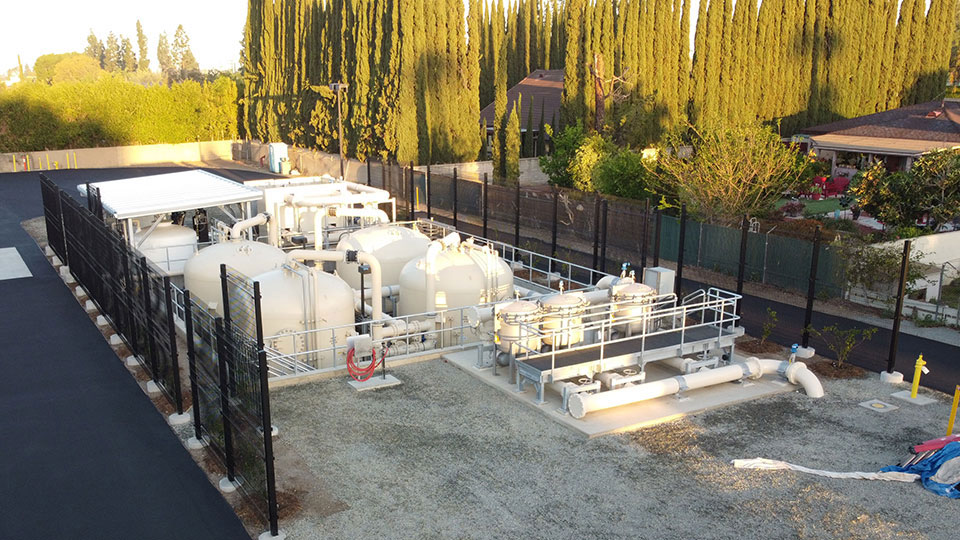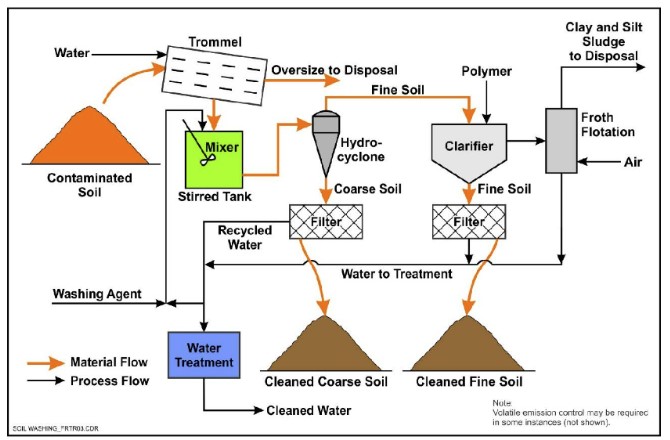Advanced Methods for Efficient PFAS Contamination Elimination
The persistent obstacle of PFAS contamination necessitates the expedition of advanced removal approaches that can efficiently attend to these harmful compounds. Cutting-edge technologies, such as sophisticated oxidation procedures and numerous adsorption techniques, have become encouraging solutions in mitigating PFAS from impacted environments. The duty of regulatory frameworks in shaping these innovations can not be overlooked, as they determine the rate and direction of remediation efforts. As we evaluate these sophisticated techniques, it becomes crucial to assess their useful applications and the more comprehensive implications for environmental health and policy.
Understanding PFAS Characteristics
Although per- and polyfluoroalkyl substances (PFAS) have actually been widely utilized in numerous commercial and consumer items as a result of their special residential or commercial properties, their persistence in the environment poses substantial difficulties to public health and safety and security. PFAS are a group of synthetic chemicals identified by a carbon-fluorine bond, one of the toughest chemical bonds understood, which contributes to their exceptional security and resistance to degradation. This security enables PFAS to accumulate in the setting and living microorganisms, resulting in possible unfavorable health impacts.
These exact same homes add to their environmental perseverance, as PFAS do not easily break down through natural procedures. Recognizing the chemical properties of PFAS is essential for creating efficient approaches to handle and reduce their ecological impact.
Innovative Remediation Technologies
The perseverance of PFAS in the atmosphere has actually stimulated the growth of innovative removal technologies aimed at effectively removing these impurities from influenced ecological communities. Amongst one of the most appealing methods are advanced oxidation procedures (AOPs), which make use of powerful oxidants to break down PFAS substances right into less hazardous materials. AOPs can be customized to target particular PFAS structures, boosting their effectiveness.
Another arising innovation is using adsorption media, such as turned on carbon and ion exchange resins, which can uniquely record PFAS from polluted water. These products have shown substantial removal performances, although routine replacement and regrowth are required to maintain performance.
Membrane filtering techniques, including reverse osmosis and nanofiltration, are additionally acquiring grip in PFAS remediation. These methods can successfully separate PFAS from water, supplying a practical solution for dealing with polluted resources. Additionally, thermal therapy techniques, such as incineration, can decompose PFAS into safe results, though they need mindful management to regulate emissions.
Collectively, these cutting-edge remediation modern technologies represent considerable advancements in the continuous fight against PFAS contamination, using various methods to recover affected atmospheres and protect public wellness.

Bioremediation Techniques
Bioremediation techniques offer an encouraging strategy to addressing PFAS contamination by using the natural capacities of microorganisms to weaken these consistent compounds (m270 waste management). This technique involves the usage of bacteria, fungis, and other germs that can metabolize or transform PFAS materials into much less dangerous byproducts
Current developments in molecular biology and ecological microbiology have actually enhanced our understanding of microbial neighborhoods and their potential duties in PFAS degradation. Scientists are actively checking out specific stress of bacteria, such as Pseudomonas and Bacillus, which have actually demonstrated the capability to damage down specific PFAS substances.
In situ bioremediation strategies, where microbes are stimulated straight in contaminated settings, can be especially effective. This strategy typically involves the application of nutrients or electron contributors to promote microbial development and task. Additionally, ex-spouse situ techniques, such as bioreactors, enable regulated conditions that can optimize click this deterioration rates.
In spite of the guarantee of bioremediation, challenges stay, including the complicated nature of PFAS substances and the requirement for extensive area testing - m270 waste management. Continued r & d will be critical to refine these methods and analyze their efficiency in varied ecological contexts
Adsorption and Filtration Techniques
Resolving PFAS contamination frequently entails using adsorption and filtration approaches, which are developed to eliminate these relentless chemicals from water and soil. Among the numerous strategies, triggered carbon adsorption is commonly used as a result of its high surface location and porosity, enabling effective trapping of PFAS particles. Granular turned on carbon (GAC) systems are specifically preferred for dealing with big quantities of polluted water, while powdered triggered carbon (POLITICAL ACTION COMMITTEE) can be utilized for smaller-scale applications.
Ion exchange resins also show guarantee in PFAS removal, functioning YOURURL.com by exchanging PFAS ions with less harmful ions in the water. This method has actually shown effectiveness in focusing PFAS substances, facilitating their subsequent removal. Furthermore, membrane layer filtering strategies, such as reverse osmosis and nanofiltration, run by utilizing semi-permeable membrane layers to different PFAS from water, efficiently decreasing their concentrations.
While these methods work, they must be carefully picked based on the details PFAS compounds existing and the environmental context. Continual advancements in materials scientific research and engineering are causing the advancement of novel adsorbents and filtering systems that improve elimination effectiveness and reduce functional costs, consequently improving general remediation efforts.
Regulatory and Plan Considerations
Exactly how can effective regulative structures enhance the monitoring of PFAS contamination? Extensive plans are vital to make sure a coordinated and durable response to the obstacles positioned by per- and polyfluoroalkyl materials (PFAS) Regulations can develop clear guidelines for surveillance, reporting, and remediating PFAS-contaminated sites, cultivating accountability among markets and public entities. (m270 waste management)

Furthermore, economic incentives and grants can be incorporated right into policies to encourage the fostering of innovative remediation innovations. Policymakers need to also prioritize r & d, guaranteeing that arising approaches for PFAS elimination are confirmed and executed successfully.
In addition, public awareness and his comment is here interaction are essential components of any type of governing strategy, equipping areas to advocate for their health and wellness. Ultimately, a well-structured regulative setting will not just enhance the administration of PFAS contamination but likewise promote lasting techniques that protect future generations.
Final Thought
In recap, the complexity of PFAS contamination demands the fostering of sophisticated remediation approaches. Continued study and advancement in this field continue to be important to attending to the challenges postured by PFAS contamination.